Past PKD research fellowships
To move us forward in finding treatments, we select outstanding researchers as recipients of the PKD Foundation Fellowships. The fellowships recognize early-career scientists whose achievements and potential identify them as rising stars – the next generation of scientific leaders in PKD research. Each fellow receives $60,000 a year for two years.
Below is information about completed fellowships. Looking for current fellows?


Get the latest information on treating PKD.
2023 fellows

Sarah Miller, Ph.D.
University of Oklahoma, Health Sciences Center
Project Summary
The Role of Trem2+ Cyst Associated Macrophages in Polycystic Kidney Disease
Polycystic kidney disease (PKD) affects over half a million people in the United States and is one of the most common genetic kidney diseases. The disease is characterized by gradual development of kidney cysts throughout a patient’s lifetime, which eventually leads to end-stage kidney disease requiring renal replacement therapy or transplant. The slow progressing nature of autosomal dominant PKD (ADPKD) means there are opportunities for pharmacological or behavioral interventions aimed at slowing disease progression. Data from multiple studies indicate that a type of immune cell in the kidney, called macrophages, promote cyst progression in animal models of the disease. However, the majority of data that supports these findings was collected using rapidly progressing congenic (i.e. born with the disease) or injury accelerated (i.e. mice are given a renal injury to make cysts grow faster) models of disease. This equates to studying the role of macrophages during 0-10 (congenic) or 16-24 years of age (injury accelerated) in humans. This does not accurately reflect the timing (age of cyst onset) or rate of disease progression (slow) in humans, where cysts begin to enlarge in the 2nd decade of life and gradually progress until end stage renal disease is reached in the 5th-9th decade. In preliminary studies, I analyzed the gene expression profiles of kidneys from both slowly and rapidly progressing models of cystic disease as well as non-cystic controls. My data identified a major difference in the macrophage profile between slow and rapid cystic models and non-cystic controls. This included a population of cyst associated macrophages (CAM) that were only present in the slowly progressing model that expressed the gene Trem2. Based on data showing a protective role for Trem2+ macrophages in other slowly progressing diseases, I hypothesize that Trem2+ CAMs restrict cyst growth. In this project I will use a slowly progressing mouse model (Pkd1RC/RC) that develops cystic disease at an age and rate similar to patients to determine the role of Trem2+ CAMs in a clinically relevant animal model. I will also test whether Trem2+ CAM macrophages are present in kidneys isolated from end stage ADPKD patients. Thus, these studies will challenge the central paradigm that all kidney macrophages promote PKD progression, and instead pursue the concept that there are beneficial subpopulations of macrophages that can help restrict cyst growth. The idea of enhancing protective macrophages which may directly inhibit cyst growth has the potential to be of significant translational value to the field as antibodies that enhance Trem2+ CAM activity are currently in clinical trials for patients with Alzheimer’s disease and may be rapidly repurposed for patients with ADPKD.
Biography
I am postdoctoral researcher working under the mentorship of Dr. Kurt Zimmerman in the Department of Internal Medicine, Division of Nephrology at the University of Oklahoma Health Sciences Center (OUHSC). During my graduate training in the lab of Dr. Jimmy Ballard, my work was primarily focused on the large clostridial toxin TcdB, produced by the bacteria Clostridioides difficile. During my studies, I found a 19-amino acid region in the toxin that, when deleted, prevented membrane translocation while leaving the toxin enzymatically active. This toxin mutant was used as a vaccine candidate in later studies and was found to elicit an immune response that was protective against disease in an animal model. This patented technology is currently being investigated for use in patients. As a result of my graduate studies, I have a strong background in microbiology, protein biology, and immunology.
As a postdoctoral researcher, my studies have focused on the intercellular crosstalk between the cystic epithelium and kidney resident macrophages. Using single cell RNA sequencing, I identified two possible clusters of cystic epithelium that shared expression of several genes, including Spp1. My spatial transcriptomics and RNA scope data confirm that Spp1 expression is strongly enriched in cystic epithelium. Further, loss of Spp1 worsened cystic disease suggesting that Spp1 restricts cyst progression, possibly through influencing macrophage accumulation and activation. The results of these studies are currently being assembled into a manuscript. My current project is focused on understanding how macrophages influence the progression of cystic kidney disease. In particular, I found that a specific subset of macrophages, termed Trem2+ cyst associated macrophages (CAM), was significantly enriched in mice with cystic kidney disease compared to non-cystic littermate controls. To test the functional importance of these cells, I have crossed cystic mice to mice lacking Trem2. Preliminary data from these studies indicate that loss of Trem2 worsens cystic kidney disease, suggesting that Trem2+ CAM may restrict cyst progression. In these studies, I will challenge the paradigm that all kidney macrophages promote cyst progression, and instead, pursue the concept that there are beneficial populations of macrophages that can restrict cyst growth.

Thomas Naert, Ph.D.
Ghent University
Project Summary
Morphological and molecular insights into vascular complications of ADPKD
A common non-renal manifestation of autosomal dominant polycystic kidney disease (ADPKD) is the development of aneurysms, abnormal outpouchings in the walls of a blood vessels. Unfortunately, aneurysms can rupture leading to life-threatening internal bleeding. Especially when located in the brain vasculature (intracranial aneurysms), rupture is a catastrophic event with a high mortality rate or leading to permanent neurological impairment. These severe vascular outcomes of ADPKD also cluster in certain families. While better quality of care for the renal manifestations of ADPKD carefully becomes available to patients, it is becoming apparent that the cardiovascular complications are still poorly characterized and there is no consensus yet on the clinical management.
Meanwhile, it is becoming accepted that these vascular complications are not simply secondary to kidney pathology. Indeed, alterations in polycystin-1 or -2 expression (PC-1 or 2, protein products of PKD1 or PKD2) directly affect non-renal cell types.
Recently, I used the aquatic model organism Xenopus tropicalis to establish novel animal models for ADPKD, by using CRISPR/Cas9 to target and inactivate either the pkd1 or the pkd2 gene. I can inject this CRISPR/Cas9 molecular scissors into freshly fertilized frog embryos and watch them develop renal cystogenesis in real-time within a time-span of two days (Naert et al, Development 2021, public news release – https://www.eurekalert.org/news-releases/933875).
While our model is also well-positioned to elucidate further insights into the renal manifestations of ADPKD, I here propose to use our unique externally developing animal model to investigate the cardiovascular complications of ADPKD. I will use so-called clearing technologies, which render biological tissues “see-through” and then employ advanced microscopy (light-sheet microscopy) to gather three-dimensional recordings of the entire vasculature in our intact frog tadpoles. Next, I will use state-of-the-art artificial intelligence (deep learning) image processing to automatically process these very large datasets and score for vascular pathology. As such, I intend to use our xenopus ADPKD models to scrutinize the entire cardiovascular structures of Xenopus embryos and investigate morphologically the presence, location and characteristics of intra- and extracranial aneurysms. After locating these, I will use single cell multi-omics (a method to understand how cells are wired) to investigate the abnormal cell signalling leading to vascular disease (finding out which wires are in the wrong position).
I believe that gaining deeper insights into the morphology as well as the signaling programs of cells composing ADPKD-associated aneurysms will yield novel insights, which could then be used to derive novel treatment strategies.
Biography
Thomas Naert, Ph.D is currently a junior postdoctoral research fellow in the laboratory of Dr. Soeren Lienkamp, in the Department of Anatomy at Zurich University. Dr. Naert will soon move as senior postdoctoral fellow in the laboratory of Dr. Kris Vleminckx, in the Department of Biomedical Molecular Biology at Ghent University. Dr. Naert has a longstanding research interest in modeling rare genetic diseases and elucidating their molecular mechanisms using the amphibian model organism Xenopus. His work has provided novel insights in both the molecular drivers of rare cancers (desmoid tumors, glioblastoma, …) as well as rare genetic diseases (ADPKD, renal agenesis, …). Dr. Naert has recently established Xenopus animal models for ADPKD, which are amenable for higher-throughput investigation via employing artificial intelligence and computer vision approaches. These new tools will be used to investigate the cardiovascular manifestations of ADPKD, with an emphasis on intracranial cerebral aneurysms.

Duuamene Nyimanu, Ph.D.
University of Kansas Medical Center
Project Summary
The Role of the Apelin system in polycystic kidney disease (ADPKD)
Autosomal dominant polycystic kidney disease (ADPKD) is one of the most common and potentially life-threatening diseases. A key feature of ADPKD is the presence of numerous fluid-filled cysts in the kidneys. The size of the cysts increases with time, making the kidneys extremely large and causing them not to function properly. Large kidneys can be very painful and impact the quality of life. ADPKD affects both children and adults, and over 50% of people with the disease develop kidney failure by age 50. Dialysis is the only option for these individuals while waiting for a kidney transplant. Heart disease is one of the most common causes of death in people with ADPKD. Despite FDA approval of tolvaptan, there is still an unmet need for more effective drugs for treating ADPKD due to the unfavorable side effects of tolvaptan. The apelin pathway has emerged as a new drug target that could help individuals with ADPKD. Activation of the apelin pathway improves heart and kidney function and lowers blood pressure in animal models. This study proposes that activating the apelin pathway in PKD will slow cyst growth and improve kidney function. Apelin signaling may also reduce the development of high blood pressure in ADPKD patients. To test these hypotheses, we will activate the apelin pathway in animal models of PKD and determine if this approach slows cyst development and reduces disease progression. We will also determine whether it prevents the activation of pathways responsible for high blood pressure in ADPKD. We will measure apelin levels in the blood of people with ADPKD and normal volunteers to determine if apelin levels can be used to predict disease progression. Apelin has already been tested in humans and found to be safe. Therefore, this study could lead to the discovery of a new treatment approach that could improve the quality of life of people with ADPKD.
Biography
Dr Nyimanu received his Ph.D. in Cardiovascular Pharmacology at the University of Cambridge, England. His doctoral thesis research focused on the role of the apelin pathway in the cardiorenal system. He holds a bachelor’s degree in Biomedicine and a master’s degree in Molecular Medicine from the University of East Anglia, Norwich, England. He also holds a Master of Research (MRes) degree in Medical Sciences (Metabolic and Cardiovascular Disease) from the University of Cambridge, England. He moved to the Jared Grantham Kidney Institute at the University of Kansas Medical Center, Kansas City, Kansas, in 2022 to pursue postdoctoral research training under the mentorship of Dr. Alan Yu.
2022 fellows

Zhang Li, Ph.D.
University of Alabama at Birmingham
Project Summary
Injury-induced tubular obstruction promotes cyst formation in ADPKD
Autosomal Dominant Polycystic Kidney Disease (ADPKD) is one of the most commonly inherited genetic renal disorders affecting more than 500,000 people in the United States and 13 million people worldwide. ADPKD is due to a genetic mutation in one of two genes, PKD1 or PKD2, that encode the proteins polycystin-1 (PC1) and polycystin-2 (PC2), respectively. Despite its strong genetic basis, the presentation and progression of ADPKD varies widely in the population. The typical course is adult-onset disease with end-stage renal disease in the 6th decade of life. However, a small proportion of patients have adequate renal function into the 9th decade, whereas others present with enlarged kidneys as teenagers. This suggests that other factors, including environment and modifier genes, also play a role in disease severity.
Recent discoveries from animal studies have found that injury to the kidney can play an important role in cyst progression. In mice the absence of functional PC1/PC2 in the kidney results in slow cyst growth in focal locations. Subsequent injury to the kidneys, however, promotes rapid and widespread cyst growth. How injury drives the rapid disease progression is a mystery.
Based on my preliminary studies, I hypothesize that tubule obstruction caused by renal injury triggers rapid cyst formation. The kidney contains millions of renal tubules that function as filtration units for the blood to eliminate waste through the urine. If this filtration is blocked, it can cause the tubules to dilate causing injury to the surrounding tubules and promoting additional tubule dilation and accelerated cyst formation.
I predict that PC1 and PC2 have an important role in the kidney to respond to injury. Under normal conditions, cells in the kidney tubules respond and repair the injury to restore full function. However, in kidneys with PKD1 or PKD2 mutations, the kidney loses the ability to fully repair. The cells that fail to correctly repair die and slough off into the tubule. The accumulation of these dead cells in the tubule lumen leads to tubule obstruction and subsequent dilation, resulting in rapid cyst progression and further injury to surrounding nephrons. This hypothesis is supported by the nature of disease progression among patients with evidence showing individual cysts form early in life but progressively increase during adulthood and that the rate of new cysts accelerates with age.
To test this hypothesis, I will use the chemotherapy agent cisplatin to induce injury in the kidneys of ADPKD mouse model. This cisplatin treatment could mimic the low dose toxic injury that occurs in patients due to frequent medicine administration. This often happens among PKD patients who are suffering from other complications. The data obtained from this work will provide a better understanding of how injury accelerates disease progression and provide new potential mechanisms to decrease the rate of cyst formation in patients with PKD.
Biography
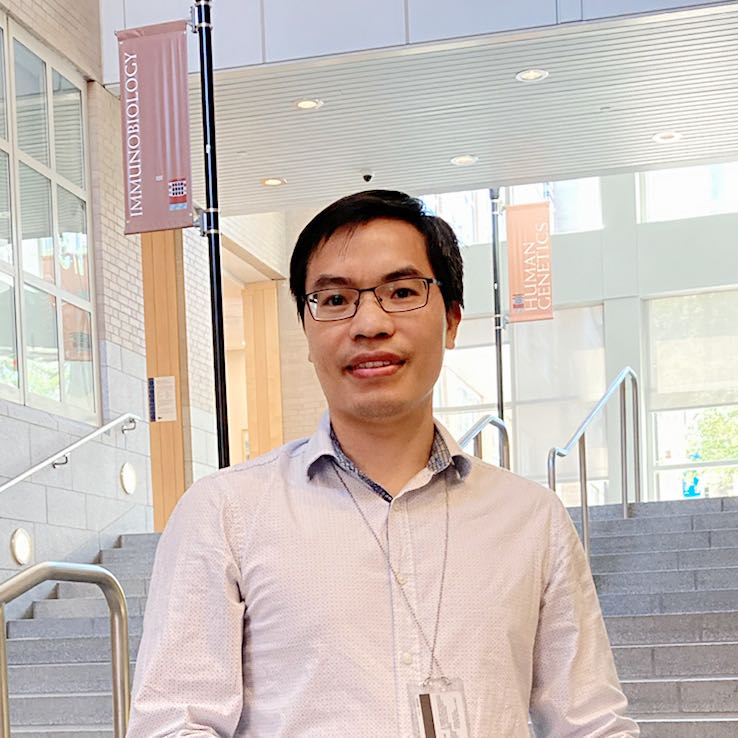
Zhigui Li, Ph.D.
Yale University
Project Summary
Investigating therapies to increase Polycycstin-1 protein expression to treat polycystic kidney and liver disease
Biography

Jonathan Walsh, Ph.D.
Rutgers, the State University of New Jersey
Project Summary
Function of polycystins in ciliary extracellular vesicles
Autosomal dominant polycystic kidney disease (ADPKD) is a common, life threatening disease that affects 1/400-1/1000 individuals. ADPKD is caused by mutations in PKD1 and PKD2, which encode the proteins polycystin-1 and polycystin-2 (PC1 and PC2). Remarkably, the function of the polycystins remains controversial decades after their discovery on the primary cilia of the kidney. In the model organism C. elegans and in humans, the polycystins have similar protein structure, act in the same genetic pathway, function in a sensory capacity, localize to primary/sensory cilia, and are shed from cells in tiny extracellular vesicles (EVs), suggesting ancient conservation. Moreover, the biogenesis and shedding of ciliary EVs are evolutionarily conserved from algae to worms to humans. EVs have emerged as information carriers of central importance for signaling and with profound effects on physiology and pathology. EVs from PKD mice induce cyst growth, suggesting that EVs may contribute to ADPKD pathogenesis. The nematode C. elegans or “the worm” has consistently driven discovery in biomedical research. For example, Dr. Maureen Barr’s work in C. elegans provided one of the first links between cilia, polycystic kidney disease, and ciliopathies. This proposal will bring to bear the power of the C. elegans system to study aspects of polycystins and EV biology that are difficult to study in humans and other mammalian model systems. This proposal exploits C. elegans genetic amenability to rapidly generate mutations using CRISPR genome editing and to determine physiological consequences. We will also take advantage of the unparalleled in vivo readouts of polycystin function and ciliary EV bioactivity in this model system. For the first time, we will be able to tackle major challenges regarding the natural role of the polycystins on extracellular vesicles as extracellular signals in the context of a whole, live organism. We will use multicolor super resolution microscopy to study how and where the polycystins act within the worm when released from the base of cilia internally into the space of neighboring cells. We will determine the consequences of genetically removing the polycystins in the context of EV function. We will examine the function of polycystin-containing externally-released EVs in animal-animal communication. “The worm” presents a unique opportunity to determine the fundamental properties and signaling function of the polycystins and PC-containing EVs. A basic understanding of polycystin-containing EVs is of paramount importance and may provide insight to the physiological roles of human polycystin-containing EVs found in urine and other body fluids in health and disease.
Biography
2021 fellows

Alysia Cox, Ph.D.
University of Southern California
Project Summary
Targeted mRNA Nanomedicine for Autosomal Dominant Polycystic Kidney Disease
Polycystin-2 (PC2) is a protein that is needed for normal kidney function. It is encoded by the Pkd2 gene. Around 21,000 Americans have PKD2 mutations that reduce PC2 levels, causing autosomal dominant polycystic kidney disease (ADPKD). This disease involves uncontrolled kidney cell growth and development of cysts that can destroy the organ. Symptoms include high blood pressure, kidney stones, urinary tract infections, and pain. Patients are also more likely to have a stroke. The only treatment available is Tolvaptan. However, this drug can cause severe side effects including liver damage and can only modestly slow disease progression.
To address this problem, we aim to design a new treatment using nanoparticles to deliver Pkd2 mRNA. mRNA is the molecule that produces proteins based on the “instruction manual” that exists in our genes. We will deliver mRNA that produces PC2 by attaching it to nanoparticles called micelles. These micelles will be made of lipids that are similar to the fats that naturally occur in our bodies, making them safe to use. We will also add peptides, small portions of proteins, to the nanoparticles that can react with kidney cells involved in ADPKD. By using these peptides, we can ensure that the mRNA therapy goes directly to the kidney and does not harm other organs.
To achieve this goal, we will test our nanoparticle therapy on healthy and diseased kidney cells from mice and humans in vitro. We will use test nanoparticle concentrations to assess the ideal dose for therapy and safety. We will use our results to optimize the nanoparticle formulation if it does not work as we expect. After we improve our nanoparticle, we will inject it into mice that have ADPKD. After the 4-week treatment, we will examine the mouse kidneys for cysts and will check other organs for signs of toxicity. We expect that the nanoparticles will stop cysts from growing.
If successful, this will be the first effective treatment to stop ADPKD. This could allow patients around the world to live longer and healthier lives, without needing kidney transplants.
Biography
Alysia Cox, Ph.D., is a postdoctoral fellow working in the Department of Biomedical Engineering in University of Southern California. Her work focuses primarily on the use of targeted micelles to deliver drugs or RNA therapeutics to the kidney, in order to improve therapeutic efficacy and reduce off-target side effects in ADPKD treatment. Her PhD work in the University of Milano-Bicocca, Italy, as a Marie-Sklodowska Curie fellow examined nanoparticle-protein interactions with the blood brain barrier, and the use of physiological proteins to target nanoparticles for the treatment of neurological disorders.

Kotdaji Ha, Ph.D.
University of California San Francisco
Project Summary
Physiological Regulation of the polycystin complex
Primary cilia are small sensory organelles found on a majority of cells and neurons. Proper function of cilia and the polycystin complex is necessary to regulate diverse cellular in renal environment. Two proteins, PC-1 and PC-2 form the polycystin complex by forming a heteromeric channel to permeate positively charged ions on the ciliary body. Mutations in PC-1 protein and PC-2 ion channel can lead to Autosomal Dominant Polycystic Kidney Disease (ADPKD), a common cause of monogenic end stage of renal disease and cilia-related disorder. It is currently unknown how mutations in PC-1 cause ADPKD and whether dietary changes in cholesterol additionally regulate the polycystin complex. In this proposal I will leverage ciliary electrophysiology, biochemistry, and imaging analysis to 1) dissect the mechanism of PC-1 in modulating the polycystin complex and 2) asking if nutrients such as cholesterol and its metabolism is required for proper polycystin function.
Aim1: Define physiological role of PC-1 in the polycystin complex. This aim will be accomplished by leveraging multiple PC-1 pathogenic mutations and following biological activity. Using a combination of electrophysiology and in vitro imaging, I recently observed proximal domains of PC-1 N terminus, LRR and CTL act as the essential region that activate the polycystin complex on the cell or ciliary membrane. Additionally, I determined that a mutation in LRR resulted in impaired channel activity. Collectively these data demonstrate the importance of PC-1 function on the cell membrane, however it is still unclear whether trafficking or misfolding of the mutant protein perturb channel function. In this aim I will determine the characteristics of pathogenic mutant in LRR and CTL by conventional or ciliary electrophysiology and trafficking using imaging analysis, and biochemistry.
Aim 2: Elucidate the association between cholesterol metabolism and regulation of the polycystin complex. Perturbed cholesterol metabolism has been resulted in the cystic phenotype. Here I will ask if the oxysterol present on renal cilia behaves as an agonist to activate the polycystin complex by performing both ciliary patch clamp and affinity assays. Understanding how cholesterol affects the kidney at the level of the cilia is important because because it will shed light on lipid-mediated regulation of the polycystin complex at molecular level.
The aims outlined in this proposal will lead to novel and fundamental insights into how pathogenic mutants in the proximal region of PC-1 subunit affect channel dynamics. Furthermore, understanding the relationship between cholesterol and the polycystin complex is imperative for the development of novel therapeutics to treat ADPKD. Should I be awarded ADPKD postdoctoral Research fellowship, it will not only help my current research, but also be a great motivation to start an independent research in the cilia and renal physiology.
Biography

Cynthia Sieben, Ph.D.
Mayo Clinic
Project Summary
Pathogenicity and pathomechanisms of variants across the ADPKD spectrum
Autosomal dominant polycystic kidney disease (ADPKD) is one of the most commonly inherited genetic diseases, and is associated with a broad spectrum of disease severity. The most dramatic extremes span from mild PKD into old age without kidney failure, to severe PKD in utero resulting in prenatal death. Some diversity can be explained by the gene mutated, mutation severity, and whether the individual has inherited a single mutation from one or both parents. The typical form of ADPKD is adult onset and results from inheritance of a single mutation, however, occasionally two mutations to the same gene, inherited from both parents, can result in severe very early onset ADPKD. Although, we have gained some understanding of the mechanisms driving clinical heterogeneity, complex genetic inheritance and uncertainty regarding the impact(s) of particular mutations on the function of the disease gene and synthesized protein limit our ability to provide confident diagnostic and prognostic information to physicians and patients. The increase in global DNA sequencing methods, like whole-exome sequencing, provides a wealth of information, but further demonstrates the need for new methods to determine the significance of particular mutations. For these reasons, further development of these tools is important not only for ADPKD, but also more broadly. Here, we aim to improve our current complex manual technique for determining the significance of substitution mutations in the ADPKD genes, PKD1 and PKD2 (~94% of ADPKD cases), by comparing our in-house method to newly developed automated prediction tools. In addition, we will assess the impacts of these mutations on known features of the PKD1 and PKD2 gene products, polycystin 1 and 2 (PC1 and PC2) in cultured human kidney tubule cells in an effort to identify common disease mechanisms. Further, we plan to evaluate the therapeutic potential of one such common mechanism identified in our previous studies and found more broadly applicable to a range of mutations in our preliminary analyses for this proposal, improper maturation and subcellular localization of PC1 due to misfolded mutant PC1 or PC2. Here, we will use chaperone therapy to improve PC1 and PC2 folding conditions in an effort to enhance or rescue proper maturation and subcellular trafficking of PC1. We will initiate these studies first in cultured cells to assess the applicability and efficacy of the treatment across a number of different PKD1 and PKD2 mutations, and then will employ successful compounds for preclinical trials in an ADPKD mouse model containing a patient mutation (Pkd1 RC/RC). These studies will aid in our understanding of the genetic complexity and disease mechanisms associated with ADPKD, and will assess the therapeutic benefit(s) of targeting one common disease mechanism, providing diagnostic, prognostic, and potentially therapeutic value to ADPKD patients.
Biography
Dr. Cynthia J. Sieben is a Postdoctoral Research Fellow in the laboratory of Dr. Peter Harris, in the Department of Medicine, Division of Nephrology & Hypertension Research at the Mayo Clinic in Rochester, Minnesota. She received her Ph.D. from the Mayo Clinic Graduate School of Biomedical Sciences in January 2020, after completing her thesis work investigating the mechanisms associated with cancer and aging, by modeling the progeroid, neoplastic syndrome, mosaic variegated aneuploidy (MVA) in mice. Dr. Sieben has had a long-standing interest in elucidating the mechanisms of human disease. She developed this interest prior pursuing her Ph.D., while working as a research technologist in PKD research, involving the: (i) characterization and identification of genes associated with the syndromic PKD form, Meckel syndrome (MKS), and (ii) investigation of ADPKD gene function, pathomechanisms, and therapeutic testing. After completing her Ph.D., elucidating the mechanisms associated with natural aging, progeria, and cancer, Dr. Sieben has chosen to return to PKD research. Her current primary research project aims to increase our understanding of the genetic complexity and pathomechanisms of ADPKD.
2020 fellow

Laura Onuchic, M.D.
Yale School of Medicine
Project Summary
Polycystic Kidney Disease Proteins and aGPCRs: Elucidating a Novel Signaling Pathway
ADPKD is one of the most common potentially lethal genetic disorders, affecting ~1:1000 individuals. It is characterized by the formation of kidney cysts, whose expansion over time compromises kidney structure and function.
Most ADPKD cases are caused by a genetic mutation in the PKD1 gene, which consequently encodes a defective polycystin-1 protein. The exact mechanisms through which this defective protein leads to disease remain unclear.
The polycystin-1 protein spans the cell membrane and has an intracellular and extracellular portion. We hypothesize that the extracellular portion of the polycystin-1 protein functions as a receptor that regulates intracellular signaling processes. We will study the structural basis for this receptor function and characterize the downstream elements of the cellular signaling machinery that respond to polycystin-1. These studies may illuminate a new biological role for the polycystin-1 protein and shed light on the processes that lead to cyst formation and on potential therapeutic targets.
Biography
Dr. Onuchic earned her medical degree from the University of São Paulo, Brazil, where she also completed her residency training as a clinical nephrologist. She moved to the Yale School of Medicine in 2019 to pursue postdoctoral research training under the mentorship of Dr. Michael Caplan, Chair of Cellular and Molecular Physiology.
2019 fellows
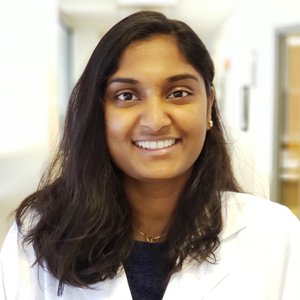
Harini Ramalingam, Ph.D.
University of Texas Southwestern Medical Center
Project Summary
Investigating the m6A RNA Methylation Pathway as a Therapeutic Option for ADPKD Treatment
ADPKD is a genetic disease characterized by the growth of numerous fluid-filled cysts in the kidney. Currently, ADPKD is a leading cause of kidney failure. The goal of my project is to find therapeutic targets that can treat ADPKD. We have identified that a novel biochemical pathway called m6A RNA methylation, is elevated in human ADPKD and multiple mouse models of ADPKD. Through genetic modulation of this pathway, we are able to reduce disease progression in one ADPKD mouse model. Next, my aim is to determine whether this pathway is a common mode of disease pathogenesis in clinically-relevant ADPKD models. Recent evidence shows that m6A RNA methylation affects the abundance of proteins. I will employ a cutting-edge technology called Ribo-seq and bio-informatic tools to identify all the actively processed proteins, which are regulated by this RNA modification pathway and are key players of ADPKD progression.
Biography
I received a Bachelor’s degree in Computer Science and a Master’s in Biological Sciences from Birla Institute of Technology and Science, India in 2009. I received my doctoral degree from the University of Texas Southwestern Medical Center in 2017. I finished my dissertation studies under the tutelage of Dr. Thomas Carroll. My dissertation title was “Balancing Renewal and Differentiation of Progenitor Cells in the Developing Kidney”. I joined Dr. Vishal Patel’s lab in 2018 for postdoctoral research training. My research is focused on understanding RNA metabolism in ADPKD progression and kidney development.

Venkata Vivek Reddy Palicharla, Ph.D.
University of Texas Southwestern Medical Center
Project Summary
Role of Tulp3-mediated ciliary protein trafficking in kidney cystogenesis
PKD is characterized by the presence of multiple large cysts in kidneys. These cysts result in an abnormal increase in the size of the kidneys, ultimately leading to kidney failure. Only one drug is available to treat PKD. Therefore, it is important to do more research on PKD to develop better treatment strategies. The first step in this process is to understand how kidney cysts are formed. Cells in kidneys have small appendages called primary cilia which are involved in sensing the environment and regulating multiple cellular functions. Earlier research has implicated the involvement of cilia in PKD pathogenesis. Through our research, we aim to understand how protein transport into and out of the cilia regulates cyst formation and test if any of these processes can be of therapeutic potential.
Biography
Dr. Palicharla is a post-doctoral fellow under the mentorship of Dr. Saikat Mukhopadhyay in the Department of Cell Biology, UT Southwestern Medical Center, Dallas, TX. He is currently working on understanding the role of protein trafficking to primary cilia in polycystic kidney disease. He earned his Ph.D. from Centre for DNA Fingerprinting and Diagnostics (CDFD) (Manipal Academy of Higher Education), India, where he worked on identifying novel cellular roles of non-canonical ubiquitin linkages.

Rebecca Walker, Ph.D.
University of Maryland
Project Summary
Relieving the Stress of PKD: A new role of PKHD1 in detoxification mediated via differential cleavage of the intracellular domain
ARPKD is a severe disease causing cyst-development throughout the kidneys. ARPKD is caused by mutation in the PKHD1 gene. The child mortality rate is high, therefore current treatment focuses on addressing severe symptoms in childhood. Patients surviving the first year of life have poorly functioning kidneys and often require extensive hospital treatment. Our knowledge of mechanisms underlying ARPKD cyst-development is greatly lacking. There is a real need for research to understand the fundamental properties of the proteins and mechanisms underlying ARPKD. Our lab has found a possible link between PKHD1 protein and detoxification of harmful chemicals in the kidney. We believe that PKHD1 protein is processed to produce fragments that move around inside kidney cells and activate pathways which warn the cell of toxins. Success in this investigation will transform our understanding of cyst-development in PKD and provide potential innovative targets for patient treatment.
Biography
Dr. Walker received her Bachelor of Science degree from The University of Leicester in the UK where her love for genetics flourished. She went on to receive her PhD from Oxford University in the UK, performing research which began her career in the field of Polycystic Kidney Disease, under the mentorship of Dr. Dominic Norris. She has undertaken important research discussing the significance of Polycystin 2 localization to cilia, a cellular organelle. Upon moving to the USA, she began her postdoctoral research in the Laboratory of Dr. Feng Qian and has expanded her interest to include investigating ARPKD. She has become intrigued by the mechanisms involved in maintaining a healthy tubule architecture and discovering which of these are disrupted in Polycystic Kidney Disease.
2018 fellow

Laverne H. Duvall Award
Kai He, Ph.D.
Mayo Clinic
Project Summary
Restoring ciliary level of functional polycystins as a novel therapeutic approach for ADPKD treatment
ADPKD is the most common inherited renal disorders. Polycystin 1 and polycystin 2, encoded by the causal genes PKD1 and PKD2, have been proposed to form a receptor/channel complex on kidney epithelial cilia. Accumulating evidence suggest a link between the level of functional polycystins and disease severity, indicative of a dosage model of cystogenesis. We recently discovered a novel paradigm that axoneme polyglutamylation is essential for the ciliary anchoring of polycystins. In this proposal, we will molecularly dissect the pathways regulating axoneme polyglutamylation and the ciliary localization of polycystins. We will further explore if restoring ciliary polycystins, by genetically or pharmaceutically targeting key regulators in glutamylation machinery, will suppress the development of PKD. An imaging-based high-content screening will be further used to discover more promising hits that could restore ciliary polycystins. Accomplishing this project will significantly advance our understanding of polycystin biology, and providing novel therapeutic avenues for ADPKD.
Biography
I received Doctoral degree from the Shanghai Institute of Biochemistry and Cell Biology, Chinese Academy of Sciences in biochemistry and molecular biology in 2016. During my Ph.D. training, I worked on studying the mechanisms of cell death-survival determination and cell differentiation. Particularly, I studied the molecular connection between mitochondrial dysfunction and epithelial-mesenchymal transition (EMT) in cancer progression, and the molecular bases of cell fate determination during TGF--induced simultaneous apoptosis and EMT. I moved to Mayo Clinic in 2016 for postdoctoral research training. My current research direction is focus on cilia signaling and ciliopathies, especially autosomal dominant polycystic kidney disease (ADPKD). I focus on how the PKD proteins and other cilia-related signaling machineries properly localize to cilia to execute the sensory function. My long term research goals are advancing the understanding of cilia biology and further identifying novel therapeutic approach/targets/hits that address unmet clinical needs of ciliopathies patients.
2017 fellows

Ashima Gulati, M.D.
Yale University School of Medicine
Project Summary
Genetic variants predisposing to intracranial aneurysm formation in autosomal dominant polycystic kidney disease
Biography
Dr. Gulati is a pediatric nephrologist with a medical degree from New Delhi, India and training in pediatrics and nephrology at University of Connecticut and Yale School of Medicine. Her research is part of the Investigative Medicine Ph.D. program at the Yale Graduate School of Arts and Sciences. Her mentor, Stefan Somlo, M.D., is director of the Center for Polycystic Disease Research at Yale School of Medicine.

Sara Holditch, Ph.D.
University of Colorado Denver Anschutz Medical Campus
Project Summary
PKD gene therapy targeting the 4E-BP1 pathway
Biography
Dr. Holditch earned a bachelor’s degree in microbial biology from the University of California, Berkeley and completed her Ph.D. in virology and gene therapy at the Mayo Clinic Graduate School of Biomedical Sciences. She has authored 19 publications, (six as first author). Her research is under the mentorship of Charles Edelstein, M.D., Ph.D., an internationally known expert in biomarkers of kidney disease and PKD.
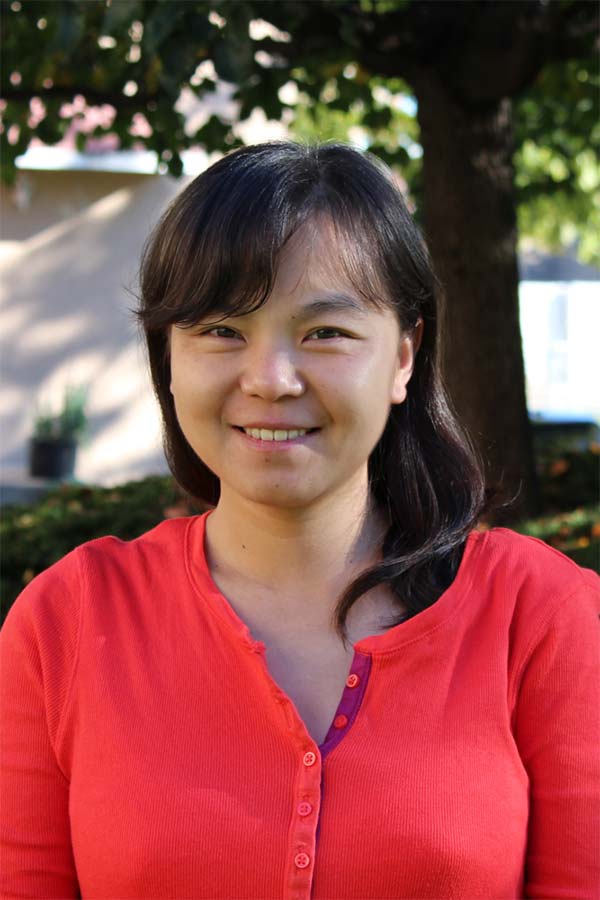
Yan Zhang, Ph.D.
University of Kansas Medical Center, the Kidney Institute
Project Summary
Targeting the LKB1-AMPK signaling pathway in polycystic kidney disease
Biography
Dr. Zhang earned her B.S. in pharmacy at Sichuan University, a M.S. in pharmacology at Peking Union Medical College and Ph.D. in pharmacology and toxicology at University of Missouri-Kansas City. She is pursuing post-doctoral training under the mentorship of Darren P. Wallace, Ph.D., at the University of Kansas Medical Center.
2015 fellows
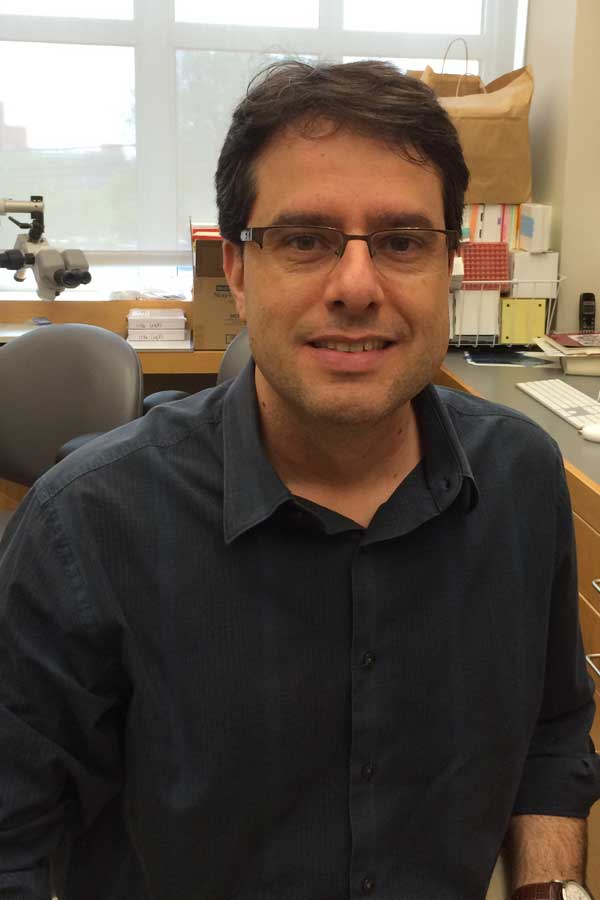
Marcelo Cassini, M.D., Ph.D.
Yale University School of Medicine
Project Summary
Can Mcp1 knock-out and blockage of macrophage receptor CCR2 alter the outcome of polycystic kidney disease?
Biography
Dr. Cassini earned an M.S. degree in kidney transplantation and a Ph.D. in kidney injury from the University of Sao Paulo – Brazil. He received his medical degree at Federal Fluminense University in Rio de Janeiro – Brazil and completed residency training in surgery and urology at State University of Rio de Janeiro. His research is under the guidance of mentor Lloyd Cantley, M.D., at Yale School of Medicine. Read more about Dr. Cassini
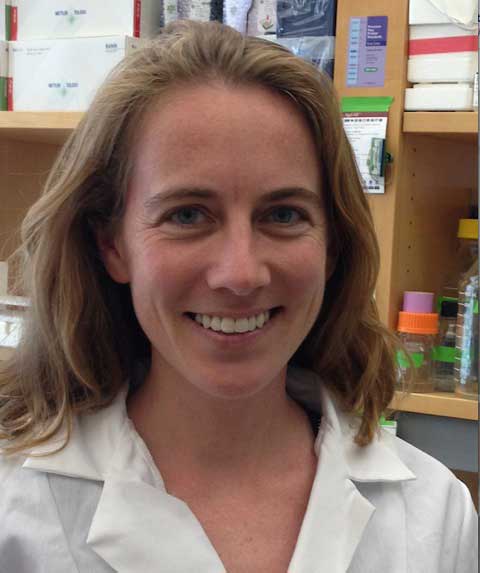
Whitney Besse, M.D.
Yale University School of Medicine
Project Summary
Genetic mechanisms of cyst pathogenesis in polycystic liver and kidney diseases
Biography
Dr. Besse earned a bachelor’s degree in biomedical engineering from Brown University, a medical degree from the University of Connecticut School of Medicine, and completed residencies in internal medicine and nephrology at the Yale School of Medicine. Her mentor, Stefan Somlo, M.D., is director of the Center for Polycystic Disease Research at Yale School of Medicine. Read more about Dr. Besse

Jeong-In Baek, Ph.D.
Medical University of South Carolina
Project Summary
The role of Tuba in ciliogenesis and cytogenesis
Biography
Dr. Baek is a post-doctoral fellow in the Department of Medicine, Medical University of South Carolina in Charleston. She earned a bachelor’s degree in biology, a master’s degree in molecular biology, and a Ph.D. in human genetics from Kyungpook National University in South Korea. She has authored over 21 publications (nine as first author). Her research is under the mentorship of Joshua Lipschutz, M.D., internationally known expert in renal ciliogenesis and PKD.
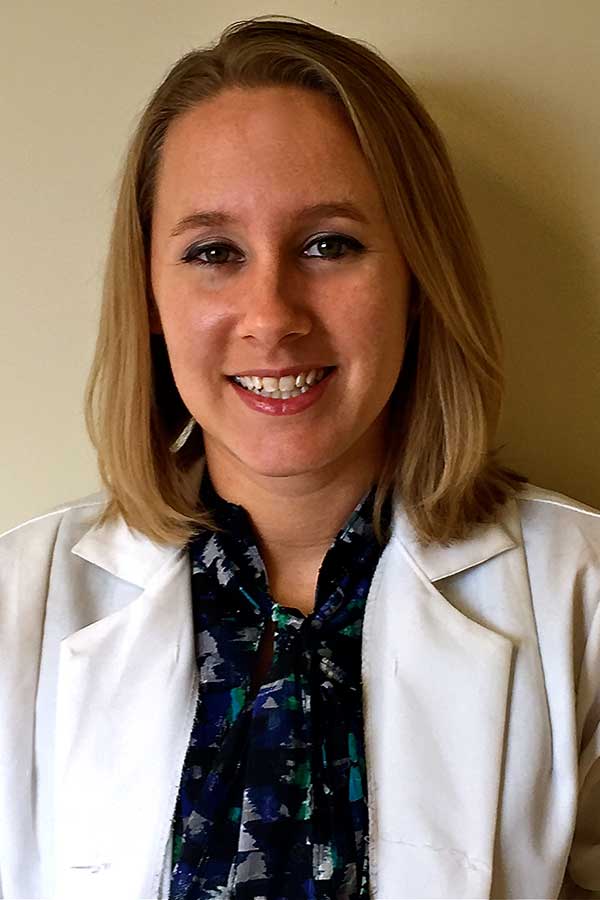
Jacqueline Peda, Ph.D.
University of Kansas Medical Center
Project Summary
The regulation of cardiac remodeling by PC1 and SMYD1 in polycystic kidney disease
Biography
Dr. Peda earned her B.S. in biology at Washburn University, and an M.S. and Ph.D. in pathology at the University of Kansas Medical Center. She is pursuing post-doctoral training under the mentorship of Dr. Xiaogang Li at the University of Kansas Medical Center.
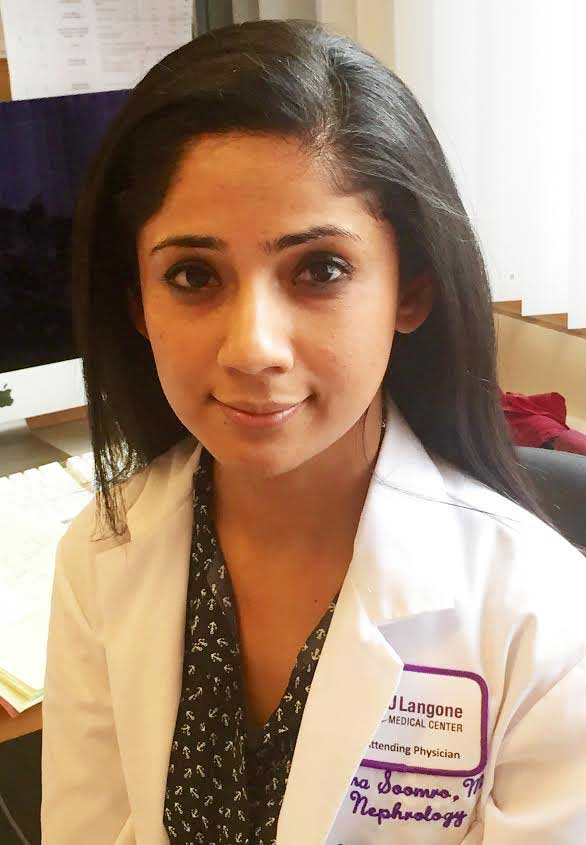
Irfana Soomro, MBBS
New York University Langone Medical Center
Project Summary
Targeting glutamine metabolism as a potential treatment for ADPKD
Biography
Dr. Soomro earned her MBBS (bachelor of medicine/surgery) at Dow Medical College – Karachi, Pakistan. She is a clinical instructor in the division of nephrology at New York University Langone Medical Center, Bellevue Hospital Medical Center. Her research is under the mentorship of Edward Skolnik, M.D., director of the Division of Nephrology.
Page last reviewed May 2023







